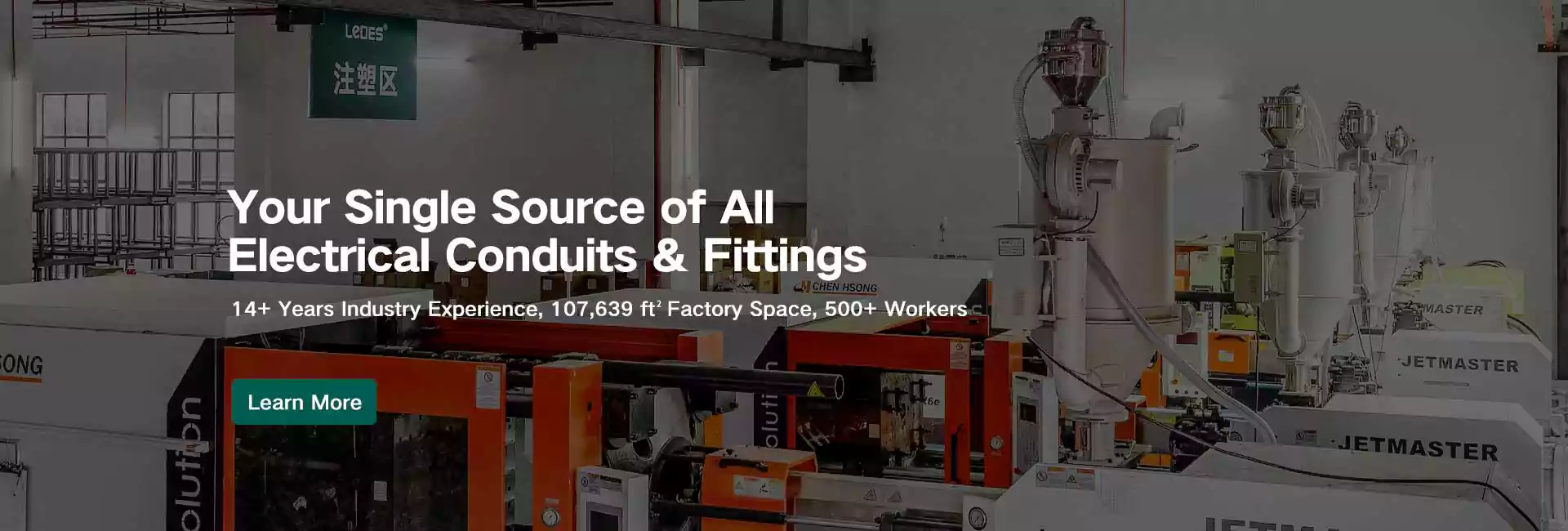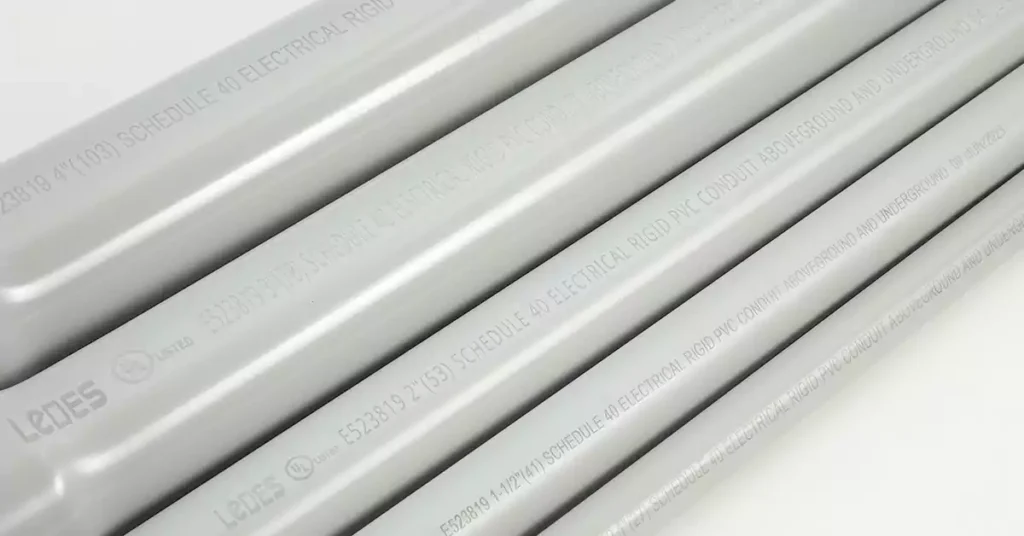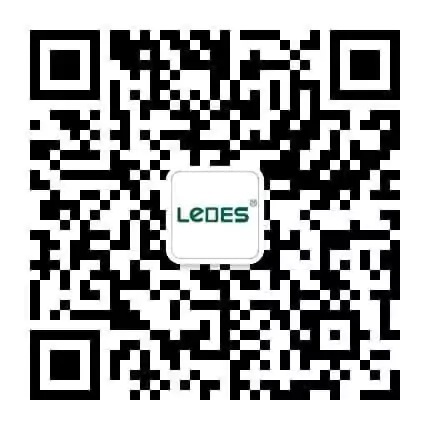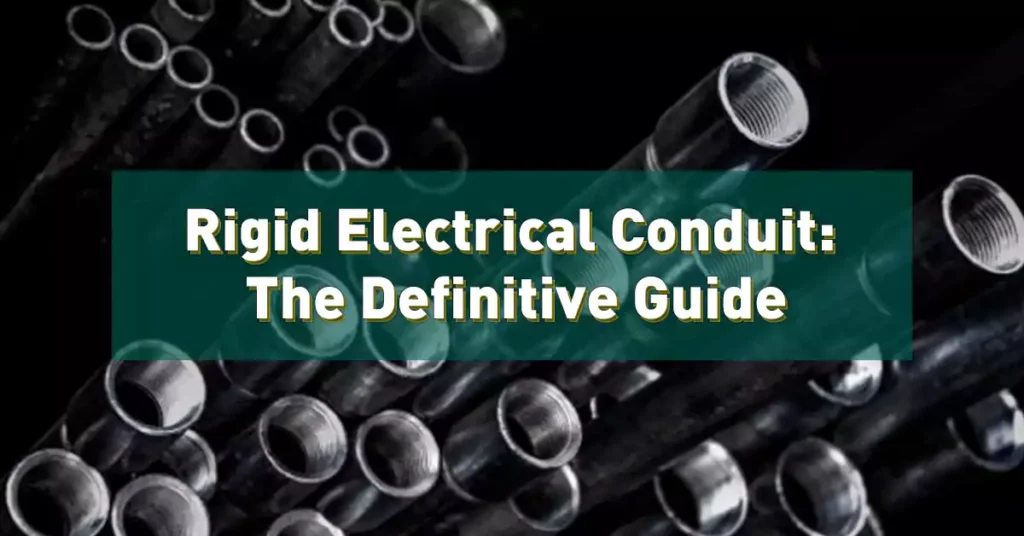
목차
Rigid electrical conduit is a staple in electrical systems, known for its durability and protective qualities, which make it an ideal solution for a range of applications. This guide offers an in-depth exploration of rigid electrical conduit, from types and features to installation guidelines and compliance with codes and standards. By the end, you’ll be well-versed in everything needed to select, install, and maintain rigid conduit for both industrial and residential projects.
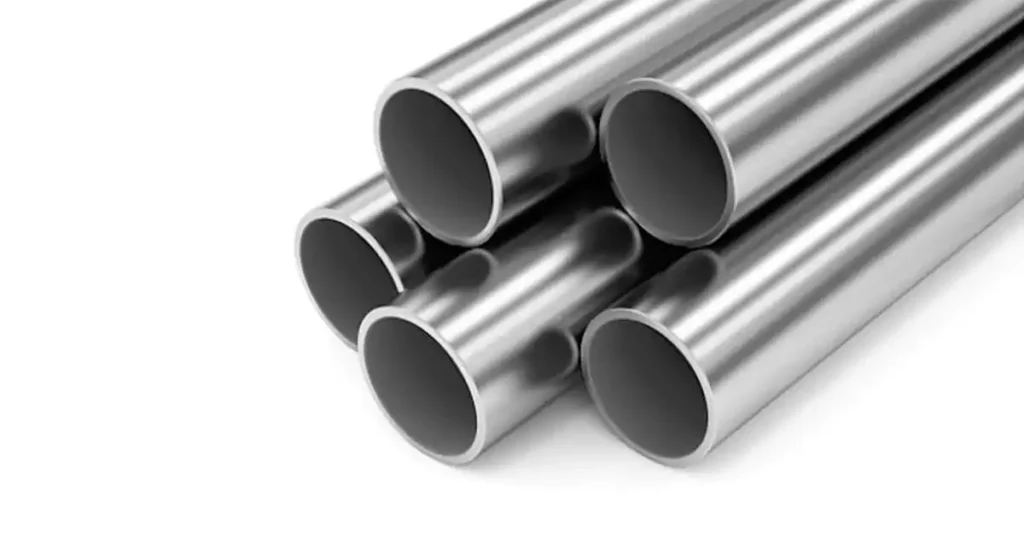
Rigid electrical conduit serves as a robust pathway that houses and protects wiring in various environments. Unlike flexible conduit, rigid types are firm and unyielding, offering excellent protection against environmental hazards, physical damage, and even electromagnetic interference in certain cases. This category encompasses several specific conduit types, each with its unique material composition and suitability for different scenarios.
Rigid conduit provides several advantages that make it a valuable choice in both commercial and residential applications:
Rigid electrical conduit provides a high level of mechanical protection against physical damage. Constructed from strong materials like steel, aluminum, and PVC, it acts as a shield, preventing accidental impacts, crushing, and abrasion from compromising the enclosed wires. This durability ensures that wiring remains secure even in high-traffic or industrial environments.
One of the most significant benefits of rigid electrical conduit is its long lifespan. Conduits made from galvanized steel or aluminum can last decades without significant wear and tear. PVC conduits, while non-metallic, also boast excellent durability when exposed to various environmental conditions. This long service life reduces maintenance costs and the need for frequent replacements, making rigid conduit a cost-effective option over time.
Corrosion resistance is an essential factor, especially for conduits used outdoors or in damp, corrosive environments. Rigid metal conduits like galvanized steel are treated with a zinc coating that resists rust and corrosion. Aluminum rigid conduit offers a natural resistance to corrosion without additional coatings, making it ideal for installations in marine and other high-moisture areas. PVC conduits, being non-metallic, are inherently immune to corrosion, making them a popular choice for underground or outdoor applications where moisture is a concern.
Many rigid conduits, particularly those made from metal, provide excellent fire resistance. This is a crucial safety feature in commercial and industrial settings where fire hazards exist. Metal conduits can contain electrical fires and prevent them from spreading, offering an added layer of protection to both the building and its occupants. This feature aligns with various safety codes that prioritize fire resistance in building materials.
In sensitive environments where electronic devices are used, EMI can disrupt signals and lead to operational inefficiencies. Metal conduits, particularly steel and aluminum, act as a natural shield against EMI, ensuring that sensitive equipment remains unaffected. This property makes rigid metal conduit an excellent choice for data centers, hospitals, and industrial facilities where electronic reliability is paramount.
Rigid conduit, especially aluminum and PVC types, is easier to handle than many people assume. While rigid metal conduit like galvanized steel can be heavy, modern installation techniques and tools simplify the process. Aluminum conduits are lightweight and easier to cut and thread, making them a preferred choice for projects requiring less labor-intensive handling. PVC conduits are even lighter, easy to cut with simple tools, and can be joined using PVC cement for fast installation.
Rigid electrical conduit comes in different types, each tailored to specific applications and environments. Understanding their properties, advantages, and limitations is crucial for selecting the right type for your project. Below, we explore the five main types of rigid electrical conduit, detailing their pros and cons and including relevant sizing requirements as stipulated by industry standards.
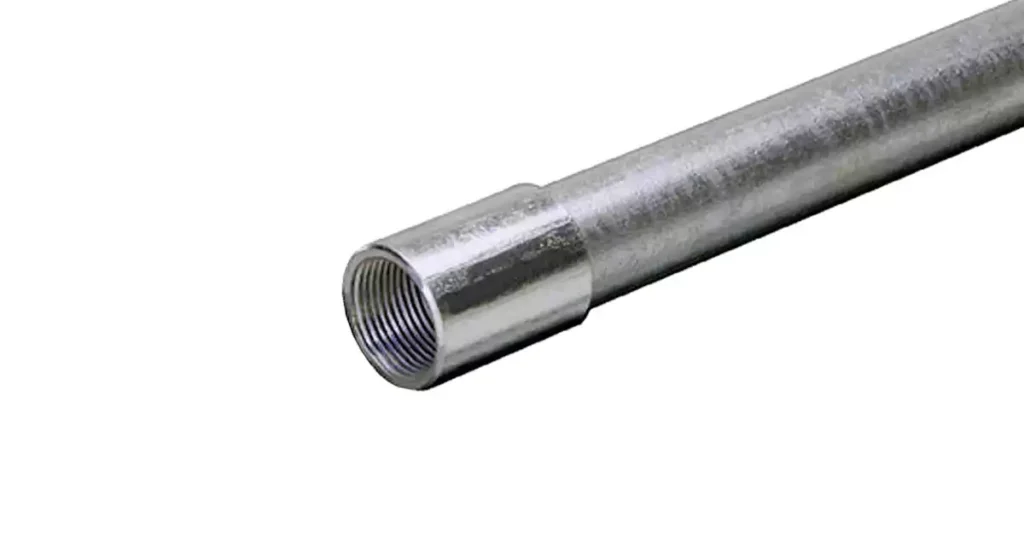
RMC is the heaviest and thickest type of rigid electrical conduit, typically made from galvanized steel. It is designed for use in physically demanding environments where maximum protection is necessary. The conduit is threaded and joined with couplings and fittings to create a robust, grounded pathway for electrical wiring.
- 장점: Provides the highest level of mechanical protection; excellent fire resistance; suitable for areas requiring robust grounding.
- 단점: Heavy and challenging to install; more expensive than lighter alternatives; prone to corrosion without proper galvanization or protective coating.
Sizing Requirements:
Minimum Size: RMC smaller than metric designator 16 (trade size ½ inch) should not be used.
Maximum Size: RMC larger than metric designator 155 (trade size 6) should not be used, per NEC guidelines.
Rigid aluminum conduit is similar to RMC in terms of thickness and strength but is significantly lighter due to the material. It is naturally corrosion-resistant, making it ideal for outdoor and marine applications.
- 장점: Naturally corrosion-resistant, making it perfect for damp or coastal environments; lighter weight simplifies handling and installation.
- 단점: Less fire-resistant compared to steel conduits; may require specialized fittings to connect with other components.
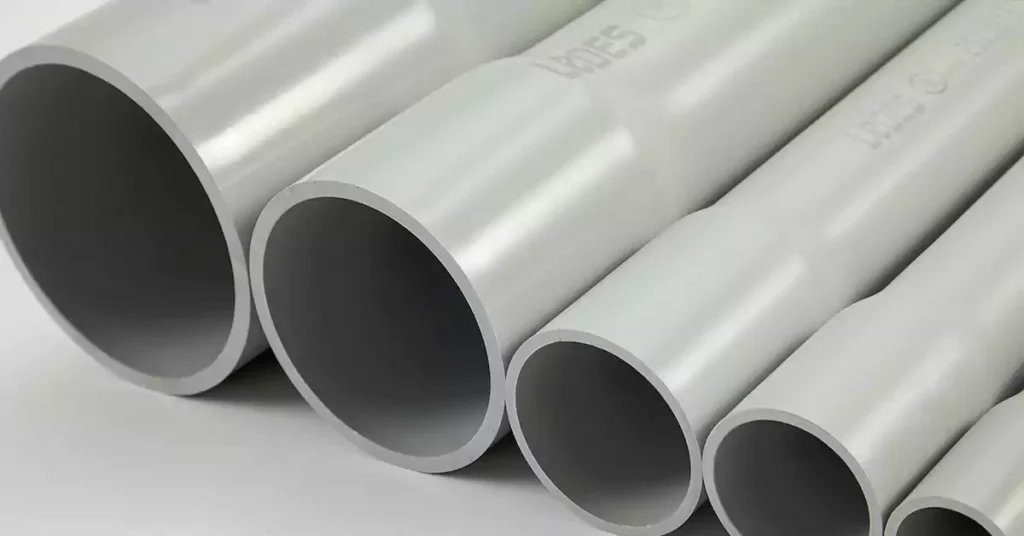
경질 PVC 도관 is a non-metallic alternative known for its light weight and resistance to corrosion and chemicals. It is typically used in underground or outdoor applications where moisture is a concern. PVC conduit can be glued with solvent cement for a secure, watertight connection.
- 장점: Immune to rust and corrosion; lightweight, making cutting and assembly straightforward; cost-effective, especially for large-scale projects.
- 단점: Sensitive to temperature extremes, potentially causing brittleness in cold weather; limited fire resistance; exposure to UV light can degrade non-stabilized PVC over time.
IMC is a lighter version of RMC, offering a similar level of mechanical protection but with thinner walls. It was designed to reduce the cost and weight associated with using RMC while maintaining strength and durability.
- 장점: Balances strength and weight well; provides significant protection at a lower cost than RMC; suitable for many outdoor applications.
- 단점: May not be as effective as RMC for grounding; special tools may be needed for installation.
Fiberglass Reinforced Thermosetting Resin Conduit (RTRC) is a non-metallic option known for its high strength, durability, and resistance to corrosion. It’s often used in industrial, outdoor, and harsh environments where chemical exposure or moisture are concerns. Fiberglass conduit is joined using special adhesive or mechanical fittings, ensuring a secure, durable connection.
- 장점: Highly resistant to corrosion and chemicals; lightweight yet strong, simplifying handling and installation; does not conduct electricity, adding safety benefits; maintains performance in extreme temperatures.
- 단점: Higher upfront cost compared to PVC and metal conduits; requires careful handling to avoid damage; exposure to UV light can degrade non-stabilized fiberglass without protective coatings; special tools may be needed for cutting and installation.
Type of Conduit | 재료 | Weight | 응용 프로그램 | Special Features |
강성 금속 도관(RMC) | Galvanized steel | 무거운 | Industrial, Outdoor | Fire-resistant, grounding path |
Rigid Aluminum Conduit | 알류미늄 | Lightweight | Marine, High-moisture | Corrosion-resistant |
Rigid PVC Conduit | PVC(폴리염화비닐) | Lightweight | Residential, Outdoor | Non-metallic, UV-resistant |
중간 금속 도관(IMC) | 아연 도금 강철 | 중간 | Commercial, Residential | Lighter than RMC, strong |
Fiberglass Conduit (RTRC) | Fiberglass-reinforced resin | Lightweight | Harsh environments, chemical plants, outdoor | High corrosion resistance, withstands extreme temperatures |
Each type of rigid electrical conduit has its advantages and specific use cases. The decision to use one type over another depends on factors such as the environmental conditions, budget, and installation requirements. Selecting the correct size and type ensures compliance with NEC and NEMA standards, which helps maintain safety and efficiency in electrical installations.
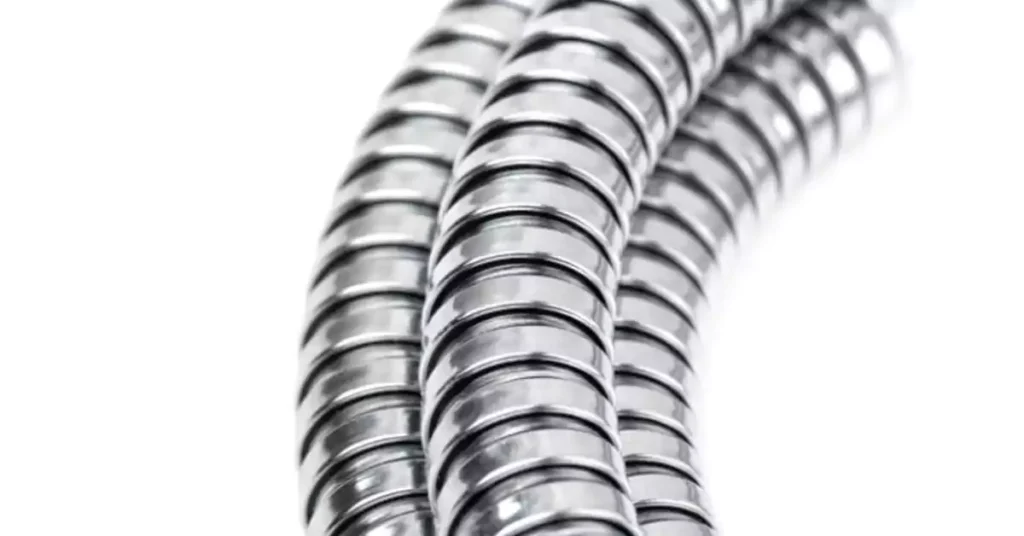
When choosing between Electrical Metallic Tubing (EMT) and Rigid Metal Conduit (RMC), understanding their differences is essential to match the right type to the project’s needs. Although both serve as protective pathways for electrical wiring, they have distinct characteristics that affect their suitability for different applications.
EMT conduit Often referred to as “thin-walled” conduit, EMT is made of galvanized steel or aluminum. It is lightweight and has thinner walls than rigid conduits, making it easy to work with, bend, and install. EMT is commonly used in indoor settings where mechanical protection is required but not as intense as in industrial environments.
Aspect | EMT Conduit | 강성 금속 도관(RMC) |
벽 두께 | Thin-walled | Thick-walled |
Weight | Lightweight, easy to handle | Heavy, more challenging to install |
Durability | Provides moderate mechanical protection | Offers superior protection against physical impact and environmental hazards |
Flexibility | Highly flexible; easy to bend with a conduit bender | Low flexibility; difficult to bend without specialized equipment |
Installation | Easier to bend and cut; ideal for quick installations | Requires threading and coupling, making installation more labor-intensive |
응용 프로그램 | Typically used in indoor, protected environments such as commercial buildings and residential settings | Suitable for outdoor, underground, or industrial settings with potential exposure to harsh conditions |
Cost | Generally more affordable | More expensive due to material thickness and durability |
Fire Resistance | Provides basic fire resistance | High fire resistance due to thicker walls |
Grounding | Can serve as an equipment grounding conductor | Acts as an effective grounding path and provides robust electrical continuity |
Both EMT and RMC must meet NEC (National Electrical Code) requirements to ensure safe and compliant installation. While EMT is governed under NEC Article 358, RMC is covered by NEC Article 344. The code defines the conditions for use, support, grounding, and allowable fittings for each type of conduit.
The decision between EMT and RMC depends on the project’s unique requirements:
Choose EMT if the project is indoors, requires cost-effectiveness, and allows for easy modifications.
Opt for RMC if maximum durability, superior protection, and outdoor or industrial-grade installation are needed.
Careful consideration of the pros and cons, along with compliance with NEC guidelines, will ensure that the selected conduit type meets the safety and functional requirements of the project.
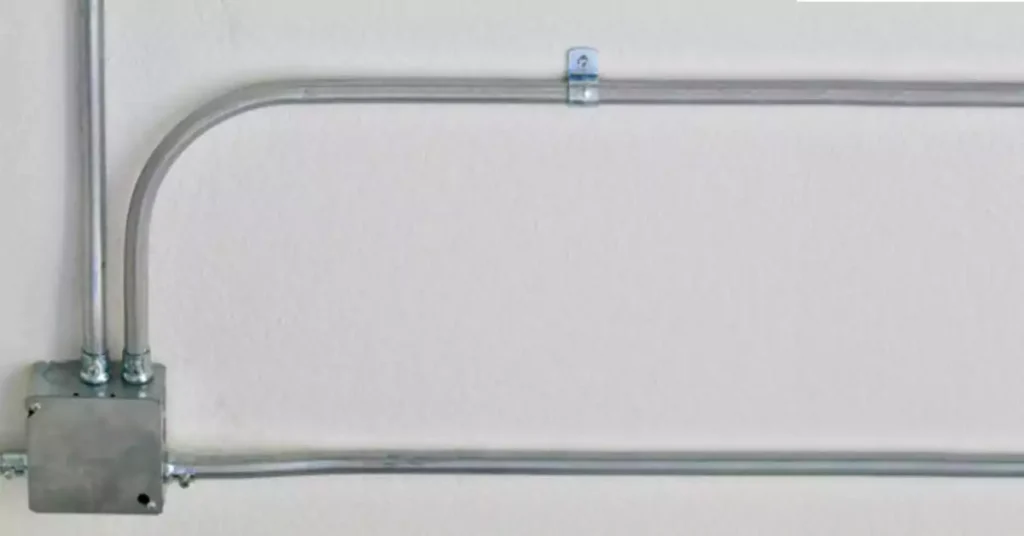
The most commonly used types are metal conduits (such as Rigid Metal Conduit, or RMC) and PVC conduits. Each type has specific applications, advantages, and NEC (National Electrical Code) guidelines that determine their appropriate use.
Below, we explore the permitted uses for both metal and PVC rigid conduits according to the NEC, focusing on Article 344.10 for metal conduit and Article 352.10 for PVC conduit.
Rigid Metal Conduit (RMC) is known for its durability and is suitable for various demanding applications. According to NEC Article 344.10, the permitted uses for RMC include:
- General Use:
RMC can be installed in exposed and concealed locations.
It is suitable for both dry and wet conditions, as well as in locations subject to physical damage.
The NEC permits RMC in all atmospheric conditions and exposures, provided it is installed with the proper protective coating.
- Outdoor Applications:
RMC is ideal for outdoor installations due to its robust construction, providing mechanical protection against weather and physical impacts.
Common outdoor uses include wiring pathways for buildings, parking structures, and outdoor lighting systems.
- Underground Installations:
When installed with appropriate fittings, RMC is permitted to be used in underground locations.
This makes it a popular choice for sub-surface wiring to protect against moisture and corrosion.
- 위험한 장소:
The NEC allows RMC in hazardous (classified) locations due to its mechanical strength and fire resistance, such as in Class I, Division 1 and 2 areas, which involve flammable gases or vapors.
- Corrosive Environments:
RMC can be installed in environments with moderate to severe corrosive influences when adequately coated or made from corrosion-resistant materials such as stainless steel.
PVC 도관 는 습기와 부식에 대한 저항성으로 알려진 비금속 옵션입니다. NEC 제352.10조는 PVC 도관에 대한 다음과 같은 허용 용도를 설명합니다.
- 지상 및 지하 설비:
PVC 도관은 지상과 지하 모두에서 사용할 수 있습니다. 지상에 설치하는 경우 NEC 요구 사항에 따라 고정하고 지지해야 합니다.
습기와 부식에 대한 자연적 저항성으로 인해 지하 설비에 널리 사용됩니다. 따라서 매설된 전기 시스템을 보호하는 데 이상적입니다.
- 노출된 위치와 숨겨진 위치:
PVC 배관은 노출된 장소에 설치할 수 있지만 필요한 경우 물리적 손상으로부터 보호해야 합니다.
일반적으로 주거, 상업, 산업용 건물의 벽, 천장, 바닥 등 숨겨진 공간에 사용됩니다.
- Corrosive Environments:
PVC 도관은 화학 공장이나 습도가 높은 지역 등 화학적으로 공격적이거나 부식되기 쉬운 환경에 매우 적합합니다.
- 습한 장소:
NEC에서는 PVC 도관이 비전도성 및 방수성이 뛰어나 습한 곳에서도 사용이 허용됩니다.
수영장, 세차장 등 습한 환경에서 흔히 사용됩니다.
- 직사광선 노출:
PVC 전선관은 특별히 자외선 차단 표시가 되어 있거나 자외선 차단 처리가 되어 있는 경우 직사광선에 노출되는 장소에서 사용할 수 있습니다.
- 온도 고려 사항:
PVC 도관은 온도 변동을 견딜 수 있지만 정격 온도에 따라 선택해야 합니다. 극한의 온도가 있는 지역의 경우 PVC 도관 유형이 NEC에 명시된 온도 정격을 충족하는지 확인하십시오.
규정 준수와 표준 준수는 전기 설비의 안전성, 효율성 및 수명을 보장하는 데 필수적입니다. National Electrical Code(NEC)는 강성 금속 및 PVC 강성 도관을 포함한 다양한 유형의 도관에 대한 명확한 지침과 요구 사항을 제공합니다. 이전 기사에서 PVC 도관을 소개했지만, 이 부분에서는 강성 금속 도관(RMC)에 대한 설명과 요구 사항을 설명하는 NEC 제344조에 대한 심층적인 해석을 제공합니다.
강성 금속 도관: 조항 344, NEC
PVC 도관: 조항 352, NEC
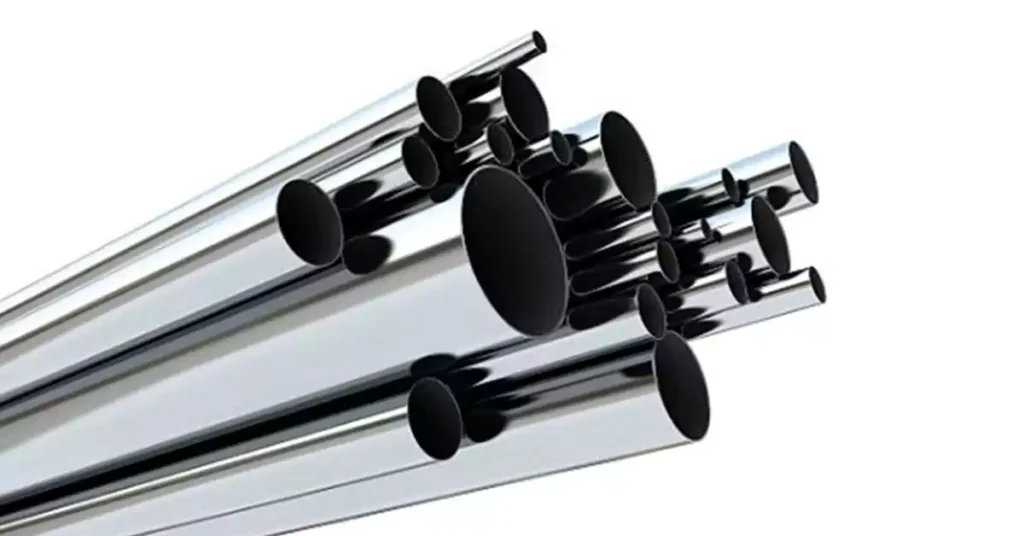
NEC 제344조는 강성 금속 도관의 사용, 설치 및 특성에 대한 포괄적인 지침을 제시합니다. 이러한 요구 사항은 다양한 응용 분야에서 전기적 안전, 구조적 무결성 및 코드 준수를 유지하는 데 필수적입니다. 이 문서에는 허용된 사용, 시공 사양, 접지 및 지원 요구 사항과 같은 측면이 포함됩니다.
NEC는 RMC에 허용되는 무역 크기를 정의하며, 미터법 지정자 16(무역 크기 1/2)에서 미터법 지정자 155(무역 크기 6)까지입니다. 이 범위를 벗어난 크기는 최적의 기계적 성능과 표준 피팅과의 호환성을 보장하기 위해 허용되지 않습니다.
NEC에서는 과열을 방지하고 안전한 방열을 위해 RMC 내의 도체 수가 9장 표 1 및 관련 표에 명시된 충전 용량 한도를 준수해야 한다고 규정하고 있습니다.
RMC의 도체 수(344.22)
도체 또는 케이블의 수 | 단면적(%) |
1 | 53 |
2 | 31 |
2개 이상 | 40 |
RMC를 구부릴 때는 변형 없이 도관의 내부 직경을 유지하는 것이 필수적입니다. NEC는 손상을 방지하고 케이블을 쉽게 당길 수 있도록 최소 굽힘 반경을 지정합니다. 이렇게 하면 절연 손상이나 도체 변형을 일으킬 수 있는 과도한 힘으로부터 배선을 보호하는 데 도움이 됩니다.
RMC의 절단된 끝은 날카로운 모서리를 제거하기 위해 리밍해야 하며, 케이블이 손상 위험 없이 통과할 수 있도록 해야 합니다. 또한, 도관의 나사산은 깨끗하고 적절하게 형성되어야 전기적 및 기계적 연속성을 유지하는 단단하고 안전한 연결이 보장됩니다.
RMC는 적절하게 보호되고 지원되어야 합니다. 3피트(900mm) 상자나 피팅과 같은 모든 종단 지점의 간격은 10피트(3m)를 초과하지 않습니다. 이 요구 사항은 설치의 안전성과 신뢰성을 손상시킬 수 있는 처짐을 방지합니다.
NEC 코드 344.30에 대한 보안 및 지원
도관 크기 | 강성 금속 도관 지지대 사이의 최대 거리 | |
거래 규모 | 중 | 피트 |
1/2 – 3/4 | 3.0 | 10 |
1 | 3.7 | 12 |
1-1/4 – 1-1/2 | 4.3 | 14 |
2 – 2-1/2 | 4.9 | 16 |
3 이상 | 6.1 | 20 |
RMC는 적절히 설치될 경우 장비 접지 도체로 사용할 수 있습니다. 이를 통해 고장 전류에 대한 저임피던스 경로가 보장되어 과전류 보호 장치의 작동이 용이해지고 전반적인 시스템 안전성이 향상됩니다.
안전하고 신뢰할 수 있으며 규정을 준수하는 전기 도관 시스템을 보장하기 위해 설치 중에 다양한 액세서리와 피팅이 사용됩니다. 이러한 구성 요소는 도관 런을 연결, 고정 및 전환하는 데 필수적입니다. 여기서는 강성 금속 도관(RMC)과 강성 PVC 도관에 가장 일반적으로 사용되는 피팅을 살펴보고 이러한 피팅과 해당 용도의 차이점을 강조합니다.
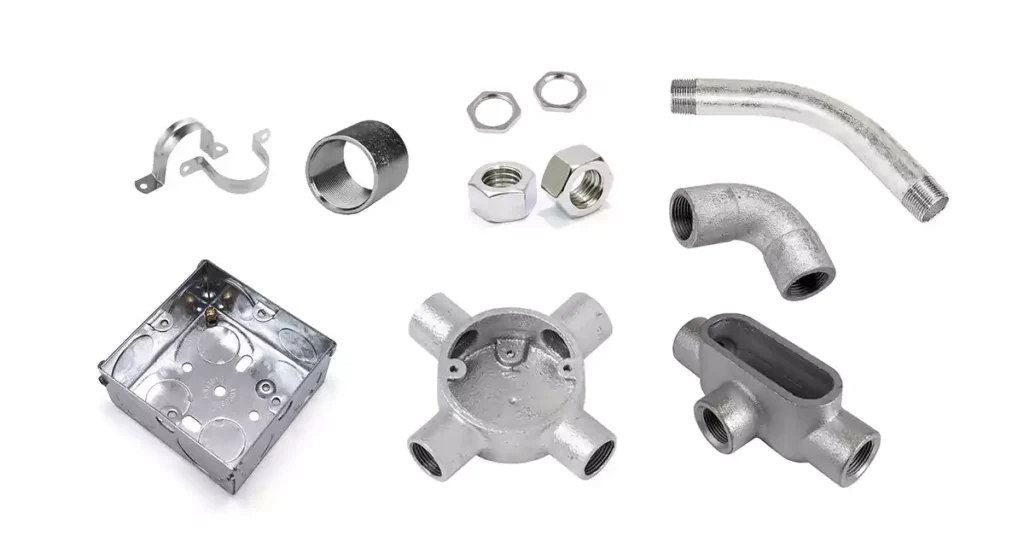
전기 설비에는 RMC 전선관의 일반적인 피팅이 8가지 있습니다.
- 커플링: RMC의 두 섹션을 연결하여 연속 경로를 만듭니다. 일반적으로 안전하고 강력한 연결을 위해 나사산이 있습니다.
- 커넥터: RMC를 전기 상자나 인클로저에 부착하여 접지와 안정성을 보장합니다.
- 팔꿈치: 방향을 바꾸기 위한 사전 형성된 굽힘으로 와이어를 당길 때 매끄러운 경로를 유지합니다.
- 잠금 너트 및 부싱: 잠금 너트는 전선관을 상자에 고정하고, 부싱은 전선 절연체를 보호합니다.
- 스트랩 및 클램프: 표면에 도관을 지지하고 고정하여 움직임을 방지합니다.
- 도관 본체 : 전선을 잡아당기거나, 이어붙이거나, 유지관리할 수 있는 접근성을 제공합니다.
- 정션 박스: 여러 개의 전선관을 연결하고, 접합부를 수용하고, 전기 연결을 보호하는 데 사용되는 금속 상자입니다.
- RMC 아울렛 박스: 접지가 잘 되고 내구성이 뛰어나며 고스트레스 환경을 견딜 수 있는 금속으로 제작되었습니다. 실외에서 사용할 수 있도록 방수 모델도 제공됩니다.
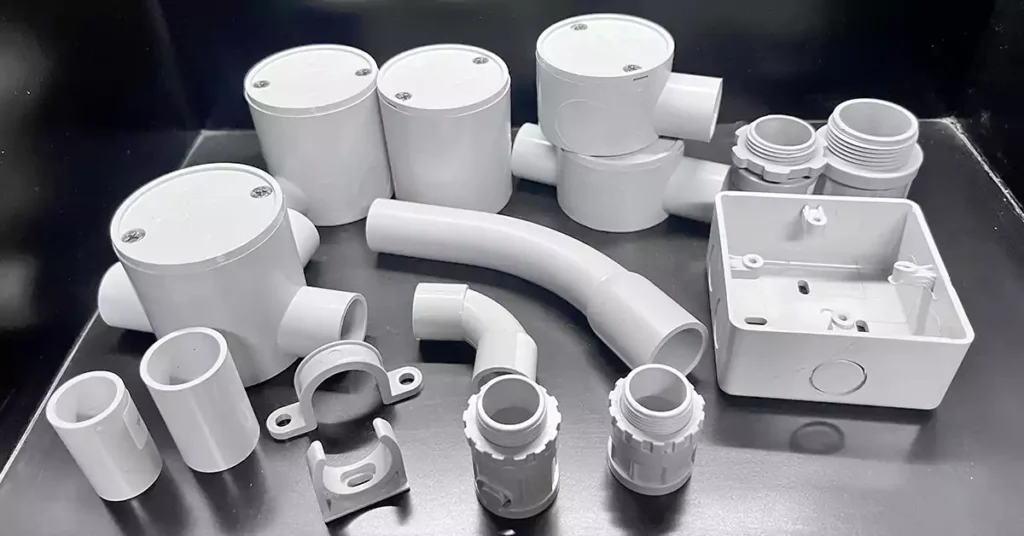
우리는 8가지 일반적인 유형을 나열합니다 PVC 도관 피팅 여기,
- PVC 커플링: PVC 도관의 일부를 용제 시멘트로 연결하여 방수 밀봉을 보장하는 데 사용됩니다.
- 커넥터: 수컷 및 암컷 어댑터와 같은 유형을 사용하여 PVC 전선관을 상자에 부착합니다.
- 확장 커플링: 온도 변화에 따른 팽창과 수축을 허용하세요.
- 팔꿈치: 방향 변경을 위한 사전 형성된 굽힘은 90° 및 45° 각도로 제공됩니다.
- 스트랩 및 클램프: PVC 도관을 표면에 고정하여 안정성을 유지하는 데 사용됩니다.
- 도관 본체: 전선을 잡아당기거나 이어붙일 수 있는 진입점을 제공하며 방향을 바꾸는 데 유용합니다.
- 정션 박스: PVC 상자는 일반적으로 내식성이 뛰어나 옥외나 습한 환경에서 사용되는 주택 연결 및 접합용입니다.
- PVC 콘센트 상자: 비전도성, 부식 방지 PVC, 가볍고 습기와 화학물질에 강함; 습한 환경을 위해 밀폐형 커버가 있는 모델로 제공됨.
재료 구성: RMC 피팅은 일반적으로 도관의 내구성과 접지 특성에 맞게 금속(강철 또는 알루미늄)으로 만들어집니다. PVC 피팅은 가볍고 부식에 강한 폴리염화비닐로 만들어집니다.
연결 방법: RMC 피팅은 종종 나사산이나 기계적 연결을 사용하여 섹션을 연결하는 반면, PVC 피팅은 용제 시멘트를 사용하여 결합하여 방수 밀봉을 만듭니다.
접지 요구 사항: 금속 도관 피팅은 전기 시스템을 접지하는 데 필수적인 역할을 하는 반면, PVC 도관 시스템은 PVC 자체가 비전도성이므로 별도의 접지 도체가 필요할 수 있습니다.
유연성: PVC 피팅은 습기와 화학 물질에 대한 유연성과 내성이 더 뛰어나 습하거나 부식성 환경에 더 적합합니다. 반면 RMC 피팅은 향상된 기계적 보호가 필요한 환경에 더 견고합니다.
강성 금속 도관(RMC)을 적절히 설치하면 규정을 충족하고 의도한 목적에 맞게 효과적으로 작동하는 안전하고 내구성 있는 전기 시스템이 보장됩니다. 아래에서 RMC를 설치하기 위한 단계별 가이드를 제공합니다. PVC 도관 설치에 대한 자세한 내용은 다음을 참조하십시오. PVC 배관 설치를 위한 포괄적인 가이드입니다.
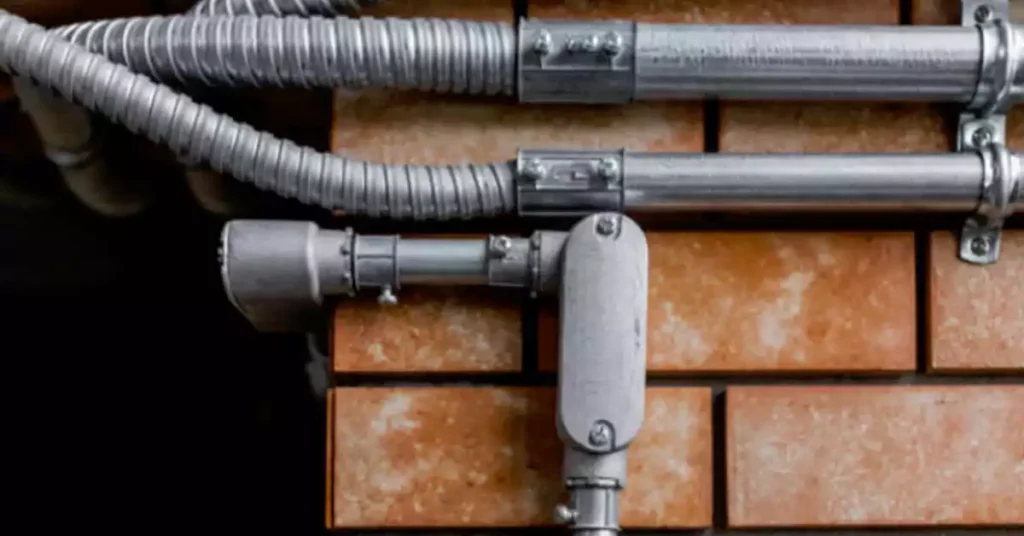
- 경로 계획:
경로 평가: 굽은 길을 최소화하여 가장 효율적인 경로를 결정합니다.
코드 확인: 계획된 경로가 NEC 제344조 및 지역 코드 요구 사항을 충족하는지 확인하세요.
- 도관 측정 및 절단:
측정: 필요한 길이를 정확하게 표시하세요.
자르기: 파이프 커터나 쇠톱을 사용하여 깨끗하고 정사각형으로 자르세요.
버 제거: 리머나 파일로 거친 부분을 매끈하게 다듬어 전선을 보호하세요.
- 스레딩:
나사산 만들기: 나사산 다이를 사용하여 도관 끝에 나사산을 추가합니다.
오일 바르기: 스레딩 오일을 사용하면 작업이 더 매끄러워지고 손상이 방지됩니다.
- 피팅 부착:
커플링 연결: 커플링이나 커넥터를 도관 끝에 나사로 고정합니다.
단단히 조이세요: 렌치를 사용하여 조이세요. 너무 조이지 않도록 주의하세요.
- 필요에 따라 구부리세요:
벤더를 사용하세요. 방향을 바꾸려면 수동이나 유압식 벤더를 사용하세요.
급격한 굽힘은 피하세요: 굽힘 부분이 NEC 반경 표준을 충족하는지 확인하세요.
- 콘듀트 장착:
스트랩으로 고정: 필요한 간격(일반적으로 상자로부터 3피트 이내, 직선 구간의 경우 10피트 간격)으로 금속 스트랩을 사용하여 도관을 표면에 고정합니다.
간격: NEC 간격 요구 사항을 따르세요.
- 전선을 당겨라:
피쉬 테이프 삽입: 피쉬 테이프를 도관에 넣고 배선을 부착합니다.
윤활제 바르기: 장거리 운행에는 와이어 풀링 윤활제를 사용하세요.
조심해서 잡아당기세요. 꼬이지 않도록 조심스럽게 전선을 잡아당기세요.
- 최종 확인:
조이고 고정하세요. 모든 부속품이 단단히 연결되었는지 확인하세요.
접지 확인: NEC 제250조에 따라 접지가 적절하게 되어 있는지 확인하세요.
연속성 테스트: 연속적인 접지 경로를 확인하기 위해 테스트를 수행합니다.
- 방수(실외 설치용):
입구 밀봉: 밀봉제를 사용하여 습기를 차단하세요.
부싱 설치: 도관 진입 지점의 전선 절연을 보호합니다.
보호 장비: 안전 안경, 장갑, 부츠를 착용하세요.
전선을 피하세요: 해당 지역에 사용 중인 전선이 없는지 확인하세요.
적절한 도구를 사용하세요: 항상 RMC 작업용으로 설계된 도구를 사용하세요.
다음은 10가지에 대한 개요입니다. leading manufacturers of rigid electrical conduit in the USA and Canada, highlighting their company background, product offerings, and market presence.
회사 개요: ABB는 북미 지역에서 탄탄한 입지를 갖춘 전기화 및 자동화 분야의 글로벌 리더입니다. 혁신과 지속가능성에 중점을 둔 ABB는 다양한 산업 분야에서 에너지 효율을 최적화하도록 설계된 솔루션을 제공합니다.
제품: ABB의 전선관 솔루션에는 내구성이 뛰어나고 고성능 소재에 중점을 둔 강성 금속 전선관(RMC)과 전기 금속 튜빙(EMT)이 포함됩니다.
시장 지위: ABB는 혁신적인 기술과 신뢰할 수 있는 제품으로 유명하며, 산업 및 상업 분야를 포함한 다양한 분야에 서비스를 제공합니다.
회사 개요: Atkore는 전기 도관 및 케이블 관리 솔루션 분야의 선도적인 제조업체입니다. Atkore의 광범위한 제품은 산업용부터 주택용 건설에 이르기까지 다양한 산업의 요구를 충족하도록 설계되었습니다.
제품: 이 회사의 제품 라인에는 다양한 용도와 엄격한 표준 준수에 중점을 둔 강성 금속 전선관(RMC), 전기 금속 튜빙(EMT), PVC 전선관이 포함됩니다.
시장 리더십: 강력한 유통망으로 유명한 Atkore는 북미 전역에서 적시에 제품을 공급합니다.
회사: 부식 방지 도관 시스템을 전문으로 하는 Robroy Industries는 특히 석유, 가스, 화학 산업 분야에서 혹독한 환경을 위한 내구성 있는 솔루션을 제공한다는 명성을 얻었습니다.
제품: 그들은 혹독한 환경에 적합한 견고한 강철 및 PVC 코팅된 견고한 금속 도관을 생산합니다.
업계 경험: 100년이 넘는 경험을 바탕으로, Robroy는 오래 지속되도록 제작된 도관 솔루션 제공에 중점을 두고 있으며, 극한의 날씨나 부식성 환경에서 프로젝트를 진행하는 고객에게 안심을 제공합니다.
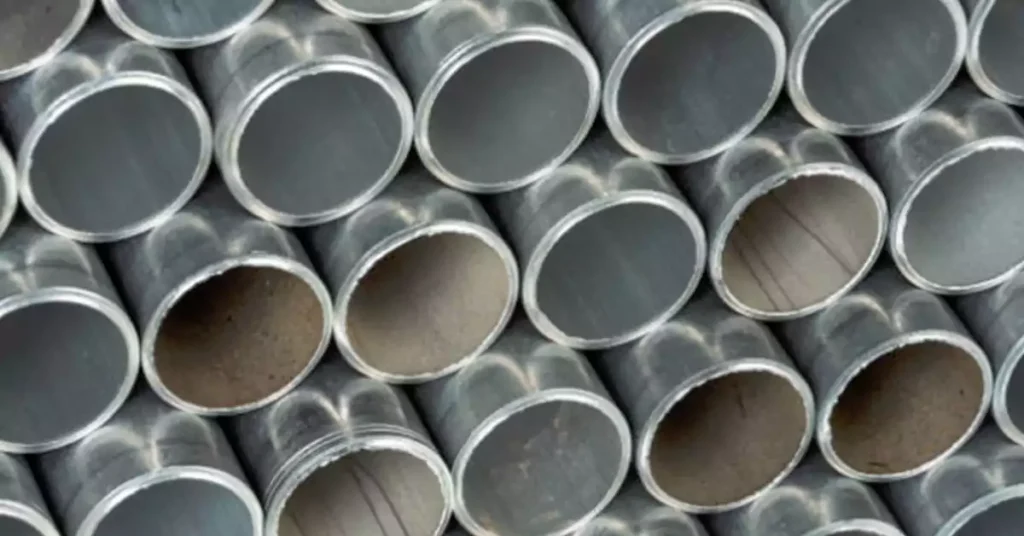
회사 개요: Zekelman Industries의 일부인 Western Tube는 국내 생산과 빠른 납품에 중점을 두고 고품질 강철 도관 제품을 제조합니다.
제품: 그들은 주거, 상업 및 산업 분야의 전기적 요구 사항을 충족하도록 설계된 광범위한 강성 금속 전선관(RMC)과 전기 금속 튜브(EMT)를 제공합니다.
시장 인지도: Western Tube는 국가 표준을 준수하는 고성능 제품을 생산하면서도 비용 효율적인 가격을 유지한다는 명성을 바탕으로 북미 시장에서 확고한 입지를 구축했습니다.
회사 개요: 아이펙스(IPEX)는 열가소성 배관 및 도관 시스템 분야의 글로벌 선두 기업입니다. 캐나다에 본사를 둔 아이펙스는 광범위한 제품 포트폴리오를 보유하고 있으며, 50년 이상 북미 시장의 주요 기업으로 자리매김해 왔습니다.
제품: 그들은 가볍고, 내식성이 뛰어나고, 비용 효율적인 강성 PVC 도관을 전문으로 생산하며, 주거용부터 대규모 상업 프로젝트까지 다양한 용도로 사용됩니다.
환경적 지속 가능성: Ipex는 환경적 지속 가능성을 위해 노력하고 있으며, 친환경 제조 공정과 재료를 사용하여 엄격한 규제 요건과 환경 기준을 충족하는 제품을 만들고 있습니다.
회사 개요: JM Eagle은 세계 최대 규모의 플라스틱 파이프 및 도관 제조업체 중 하나입니다. 고품질의 내구성 있는 제품을 대량 생산해 온 오랜 역사를 가지고 있습니다.
제품: JM Eagle의 제품은 견고한 PVC 도관으로 유명하며, 강도, 합리적인 가격, 설치 용이성 면에서 높은 평가를 받고 있습니다.
지속 가능성: JM Eagle은 지속 가능성에 대한 확고한 의지를 가지고 있으며, 재활용 재료로 만든 제품을 제공하고 에너지 효율적인 제조 공정을 통해 환경에 미치는 영향을 줄이는 데 중점을 두고 있습니다.
회사 개요: 리탈은 주로 인클로저, IT 인프라 솔루션, 자동화 시스템으로 잘 알려져 있습니다. 리탈의 전기 도관 제품군은 리탈의 광범위한 산업 솔루션을 보완합니다.
제품: RITTAL의 견고한 전기 도관 제품은 광범위한 자동화 및 산업용 인클로저 솔루션과 통합되도록 설계되어 첨단 환경의 전기 시스템에 대한 포괄적인 보호 기능을 제공합니다.
회사 초점: RITTAL은 정밀성과 신뢰성이 가장 중요한 IT, 통신, 제조와 같은 복잡한 산업에 맞춤형 솔루션을 제공하는 데 주력하고 있습니다.
회사 개요: 제켈먼 인더스트리즈(Zekelman Industries)의 자회사인 휘트랜드 튜브(Wheatland Tube)는 80년 이상의 강철 도관 제조 경험을 보유하고 있습니다. 휘트랜드 튜브는 북미 최대 규모의 전기 도관 생산업체 중 하나입니다.
제품: 휘틀랜드 튜브는 광범위한 강성 금속 전선관(RMC)과 EMT를 생산하여 다양한 환경에서 전기 배선을 탁월하게 보호합니다.
고품질: 휘틀랜드 튜브는 품질과 고객 서비스에 대한 헌신으로 유명하며, NEC 표준을 충족하거나 초과하는 제품을 제공하고 대규모 프로젝트에 대한 적시 납품을 보장합니다.
회사 개요: 철강 업계의 주요 기업인 NUCOR는 광범위한 포트폴리오의 일환으로 고품질 도관 솔루션을 생산합니다. 지속가능성 노력으로 유명한 NUCOR는 에너지 효율적인 철강 생산의 선두주자입니다.
제품: NUCOR의 강성 금속 도관(RMC)은 내구성과 강도가 뛰어난 것으로 알려져 있어 산업 및 상업 분야의 대규모 인프라 프로젝트에 이상적입니다.
지속 가능성: NUCOR의 도관 제품은 지속 가능성에 대한 회사의 헌신을 반영하여 고객에게 가장 높은 품질 기준을 충족하는 친환경적이고 오래 지속되는 솔루션을 제공합니다.
회사 개요: 레데스 도관 주거, 상업, 산업용으로 설계된 고성능 전기 도관 시스템을 전문으로 합니다.
제품: Ledes는 PVC 도관, 저연성, 할로겐 프리 강성 도관을 제공하며, 이는 주로 의료 시설 및 공공 건물과 같이 안전과 내화성이 중요한 환경에서 사용됩니다.
품질에 대한 헌신: Ledes는 안전과 업계 규정 준수에 중점을 두고 있으며, 향상된 환경 및 안전 표준이 요구되는 프로젝트에 신뢰받는 공급업체입니다.
적절한 강성 전기 도관을 선택하는 것은 전기 시스템의 안전성, 내구성, 그리고 효율성을 위해 필수적입니다. 프로젝트에 가장 적합한 도관을 선택하는 데 도움이 되는 몇 가지 간단한 지침은 다음과 같습니다.
야외 노출: 전선관이 악천후에 노출될 경우, 경질 금속 전선관(RMC)이나 알루미늄 경질 전선관(ALR)처럼 부식에 강한 재질을 선택하십시오. PVC 전선관은 극한의 악천후에 노출되지 않는 지역에도 좋은 선택입니다.
부식: 습기나 화학 물질이 많은 지역(해안 지역이나 공장 등)의 경우 PVC 코팅된 RMC 또는 PVC 도관은 녹에 대한 추가 보호 기능을 제공합니다.
주거용 vs. 산업용: 주거용 또는 상업용으로 PVC 전선관이나 EMT 전선관은 저렴하고 설치가 간편합니다. 추가적인 보호가 필요한 산업 현장에는 RMC 전선관이 더 적합합니다.
화재 안전: 화재 안전이 우선시되는 경우(예: 병원이나 학교) 연기가 적고 할로겐이 없는 강성 전선관이나 내화성 PVC 전선관을 찾으세요.
전선관의 크기가 배선에 맞고 공기 흐름이 원활할 만큼 충분한지 확인하십시오. 전선관에 너무 많은 내용물을 넣지 마십시오. 과열 및 손상으로 이어질 수 있습니다. 또한, 크기 제한을 준수하십시오. RMC는 NEC 344조에 명시된 대로 1/2인치(1.2cm)보다 작거나 6인치(15cm)보다 커서는 안 됩니다.
피팅: 선택하는 전선관 유형은 사용하는 부속품, 커넥터, 그리고 박스와 일치해야 합니다. 예를 들어, RMC는 특정 유형의 커넥터가 필요한 반면, PVC 전선관은 자체 부속품 세트가 있어 취급 및 설치가 더 쉬울 수 있습니다.
기존 시스템: 전기 시스템을 확장하거나 업데이트하는 경우, 추가 수정 작업을 피하기 위해 기존 설정과 일치하는 전선관을 선택하세요.
NEC 규정 준수: 전선관은 미국 전기 규정(NEC)을 준수해야 합니다. RMC는 제344조, PVC 전선관은 제352조의 적용을 받습니다. 프로젝트가 규정을 준수하는지 확인하려면 해당 규정을 반드시 검토하십시오.
지역 코드: 해당 지역이나 프로젝트에 적용되는 현지 건축법규나 추가 요구 사항이 있는지 확인하세요.
설치 용이성: PVC 전선관은 특수 도구와 더 많은 인력이 필요할 수 있는 RMC 전선관에 비해 가볍고 설치가 쉽습니다. 전선관을 선택할 때는 프로젝트 일정을 고려하세요.
비용: PVC 도관은 일반적으로 RMC보다 저렴하지만 동일한 수준의 보호 기능을 제공하지 못할 수 있습니다. 초기 비용과 장기적인 내구성의 균형을 고려하십시오.
확장: 향후 시스템을 확장하거나 수정할 계획이라면 도관의 유연성을 고려하십시오. EMT는 더 유연한 반면, RMC는 더 높은 보호 기능을 제공하지만 수정이 더 어렵습니다.
유지: PVC 도관은 유지관리 비용이 낮지만, 금속 도관은 녹이나 손상 여부를 주기적으로 점검해야 할 수 있습니다.
적합한 강성 전기 도관을 선택하는 것은 프로젝트의 필요성, 환경 조건, 예산 및 건축법 준수 여부에 따라 달라집니다. 위의 요소들을 고려하고, 확신이 서지 않는 경우 전기 기술자와 상담하여 시스템이 안전하고 법규를 준수하는지 확인하십시오.
추가 자료는 다음을 참조하세요.
NEC 코드: NEC 공식 간행물에서는 전선관 사용에 대한 지침을 제공합니다.
NEMA 표준: NEMA 웹사이트에서는 도관 재료의 등급과 요구 사항에 대한 정보를 제공합니다.
제조업체 데이터 시트: 구체적인 설치 지침은 종종 제품 데이터시트에 제공됩니다.
전기 기술자에게 문의하세요: 경험이 풍부한 전기 기술자는 해당 지역의 규정 요구 사항과 모범 사례에 대한 통찰력을 제공할 수 있습니다.
적절한 경성 전기 도관을 선택하는 것은 전기 시스템의 안전성, 내구성 및 효율성을 보장하는 데 중요한 단계입니다. RMC, PVC 도관, EMT 등 다양한 유형의 경성 도관을 이해하고 환경 노출, 화재 안전, 규정 준수 등의 요소를 고려하는 것까지, 모든 결정은 설비의 전반적인 성능에 중요한 역할을 합니다. 프로젝트의 구체적인 요구 사항을 평가하고 적절한 도관, 부속품 및 액세서리를 선택하면 안정적이고 오래 지속되는 전기 시스템을 구축할 수 있습니다.
이 가이드 전반에서 살펴보았듯이, 각 전선관 유형의 이점, 용도 및 설치 요건을 이해하고 NEC 및 기타 규정에서 정한 표준과 어떻게 부합하는지 확인하는 것이 중요합니다. 주택, 상업 또는 산업 프로젝트 등 어떤 프로젝트를 진행하든 적합한 전선관을 사용하면 전기 시스템을 오랫동안 안전하게 보호하고 효율적으로 사용할 수 있습니다.
선택 시 설치 용이성, 비용, 향후 유지 관리, 확장 가능성 등의 요소를 항상 염두에 두십시오. 물론, 시스템이 모든 안전 및 규제 기준을 충족하는지 확인하기 위해 전문가와 상담하는 것도 중요합니다. 이러한 지식을 바탕으로 이제 현명한 결정을 내리고 다음 프로젝트에 가장 적합한 강성 전기 도관을 자신 있게 선택할 준비가 되었습니다.
궁금한 사항이 있으시면 언제든지 저희에게 연락해 주시면 감사하겠습니다. 당사의 전기 배선 전문가가 영업일 기준 1일 이내에 답변해 드리겠습니다.

